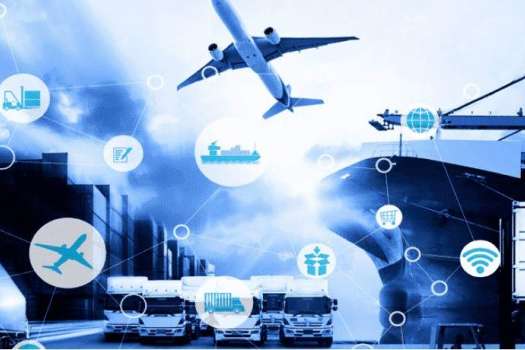Interview with Van Lin, Director of Intelligent Mobile Solutions of Service IoT Group, Advantech; Kunhong Chen, Transportation Sector Manager of Industrial IoT Group, Advantech
In recent years, edge computing, AI, 5G, and LiDAR have advanced in combination with the IoT. The aim of smart transportation is to raise safety while improving passenger comfort. The benefits of smart transportation are becoming increasingly evident in both highway and railway transportation systems. In keeping with this trend, Advantech has leveraged its extensive smart transportation experience to build a co-creation platform in collaboration with its partners. This facilitates the development of smarter applications and new innovation for urban transportation.
Accelerating V2X communication
Vehicle-to-everything (V2X) communication is the passing of information from a vehicle to any device that may affect the vehicle, and vice versa. According to Van Lin, Director of Intelligent Mobile Solutions of Service IoT Group at Advantech, “The realization of smart transportation involves not just the development of buses, metros, and railways, but also people, the environment, and other related equipment. The combination of 5G, AI, edge computing, LiDAR, and IoT is key to realizing this development. Advantech and its clients will implement and benefit from the smart future of V2X communication.”
Mr. Lin explained that equipping vehicles with sensors and cameras has been a growing trend for some time. Until recently, these devices were primarily used for recording trips. The information acquired by these devices was used to assign accident causes and accountability. This trend is changing with the maturing of edge AI computing applications. Vehicles can acquire and analyze information to dynamically make meaningful judgments during trips. In the future, 5G’s high-bandwidth and low-latency capabilities will upload decisions and information to a cloud platform instantaneously. This technology can be utilized to help administrators manage situations in real time, and aid in the development of various smart applications.
In highway transportation, edge AI can be used in forward-collision/lane departure warning, blind-spot detection, and driver behavior monitoring systems. In urban areas, preventing drivers from running red lights used to be impossible. But now, with the use of edge AI and 5G, it is possible to monitor vehicles, traffic lights, and driver behavior in order to reduce the running of red lights.
Smart development of railway transportation focuses on safety and service quality
The rise of 5G and AI has facilitated diverse smart railway transportation applications, leading to increased demands for system upgrades. Kunhong Chen, Transportation Sector Manager of Advantech’s Industrial IoT Group, pointed out that the Taipei Metro’s past operational goals focused on increasing passenger capacity. This has shifted to improving safety and service quality. The development of smart operations is driving this change. Accordingly, Taipei Metro is actively engaged in upgrading its systems—in particular its driving and signaling systems. Consequently, the assessment of safety-related electronic systems (Safety Integrity Level, SIL) has been upgraded from SIL 2 to SIL 4. Likewise, the signaling and processing system (European Train Controlling System/ETCS) has been upgraded from ETCS 2 to ETCS 4. These upgrades contribute significantly to improving safety. Additionally, using AI and LiDAR applications and automatic train operation (ATO), operators can build management models that center around smart operations.
Advantech continues to deliver innovative software/hardware solutions and platform services at every stage of development. Mr. Chen emphasized that Advantech initially focused on developing passenger-related systems and solutions, including CCTV and integrated supervisory control systems. This focus shifted toward developing safety-related solutions, such as interlocking systems, dual backup platforms, GPU-based ATO solutions, and train-to-ground high-speed transmission technologies. Presently, Advantech is enhancing railway safety by utilizing AI, LiDAR, and real-time wireless communication technologies to create smart solutions for obstacle detection, pantograph inspection, and train coupler remote monitoring.
Advantech connects global transportation industry partners
Advantech will continue to promote the integration of 5G, edge AI, and smart transportation. Mr. Lin emphasized that Advantech is dedicated to developing industrial computers explicitly for transportation. In the future, Advantech plans to integrate 5G and edge AI technologies into its hardware products. Advantech has collaborated with sensor manufacturers, system integrators, and other partners to create AIoT solution-ready packages (AIoT SRPs) via its WISE-PaaS platform. To accelerate the implementation of AIoT SRPs in various transportation sectors, Advantech has further subdivided its product features. Advantech also launched its range of co-created I.App products onto Marketplace site to enable domain-focused system integrators to download and deploy rapid build solutions for various sectors.
Mr. Chen added that Advantech has long been a part of the global railway transportation ecosystem. Together with vehicle manufacturers and large international contractors, they have co-created advanced products from the initial design phase. Advantech selected key partners from various sectors to deliver innovative solutions for railway transportation smart applications. With co-creation in mind, the company has comprehensively embraced the changes cutting-edge technologies have brought to smart railway applications.
With more than 30 years of industrial automation experience, Advantech plans to leverage its WISE-PaaS platform and global resources to connect all partners in the smart transportation industrial chain. By integrating 5G, AI, edge computing, and LiDAR into AIoT applications, Advantech continues to promote and accelerate smart transportation.

